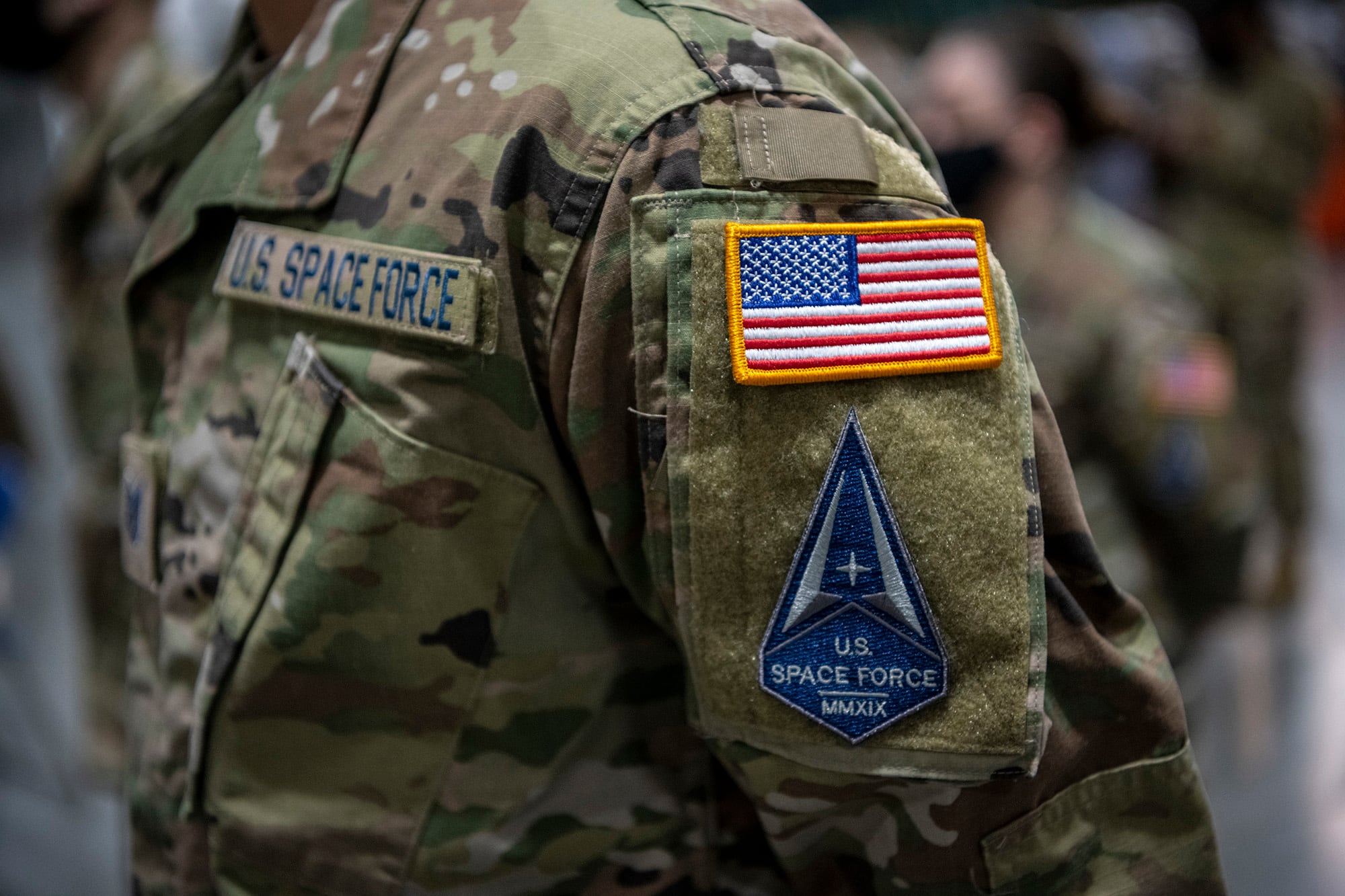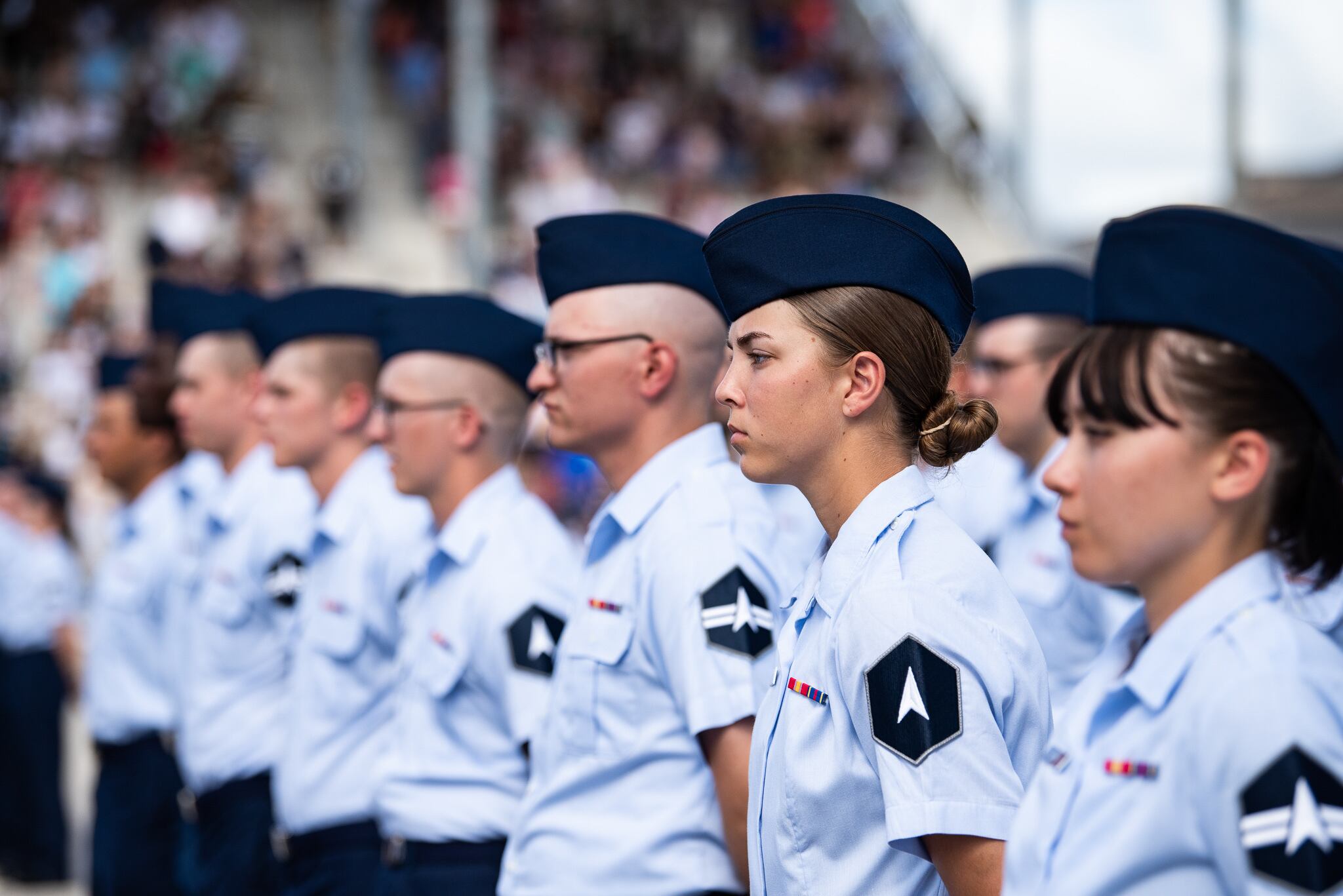The Space Force will become the nation’s first military service that allows troops to switch between full-time and part-time work without formally transferring to a Reserve component or the National Guard.
The youngest branch of the armed forces has lacked its own part-time workforce since its creation in 2019. That changed as part of the 2024 National Defense Authorization Act, signed into law by President Joe Biden in December.
The move is part of the Space Force’s broader vision to adapt military service to the needs of modern Americans. Eliminating the traditional component structure, which separates troops serving on active duty from those in Reserve or Guard units, aims to offer more flexibility for those looking to serve their country and ultimately keep them in uniform longer.
“When fully implemented, this new construct will allow us to manage our military force more effectively, improve quality of life and retention, and capitalize on skill sets developed outside the military to continue delivering unmatched space capabilities,” Maj. Tanya Downsworth, a Space Force spokesperson, told Military Times via email.
Now the service begins the difficult work of figuring out how to make the legislation a reality for the 9,000 or so uniformed guardians under its purview, as well as Air Force Reservists in space-related jobs. A phased implementation is expected to last five years.
“We’re looking at the language to make sure we exactly understand how to move forward,” Chief Master Sergeant of the Space Force John Bentivegna told Military Times in a Jan. 11 interview. “What does it mean to be part-time? What benefits do you have? … How do we promote? How do we select? What does that look like? We’re working through that right now.”
The Space Force works to protect American interests in space and supports military operations around the globe through a vast network of satellites and radars on Earth and in orbit.
As the new service shapes a workforce separate from and much smaller than the other armed forces, it has seized on an opportunity to avoid pitfalls that have accompanied transitions in and out of the Reserve components.
Last year, the federally funded think tank Rand Corp. found retention issues linked to persistent transition challenges for guardians moving to and from part-time roles in the other services — like the Air National Guard or the Air Force Reserve — from reappointment and pay delays to complications with benefits and medical coverage.
Now, as the Space Force prepares to continue expanding its workforce — the only branch Congress has allowed to grow in fiscal year 2024 — guardians will see new options to create their ideal career with potentially fewer headaches.
According to the 2024 NDAA, those on active duty in the Space Force will become classified as serving on “sustained duty,” a regular, full-time status; or as “not on sustained duty,” a part-time position.
Part-timers must still participate in at least 48 scheduled drills or training periods each year, and serve on active duty for at least 14 days (excluding travel time) per year; or serve on active duty for training for up to 30 days each year, according to the law.
The legislation also establishes the designation of “inactive status” for guardians. That would be similar to the Individual Ready Reserve that already exists in other services as an additional pool of people who can be called up in an emergency, Downsworth said.
It’s unclear how many guardians will be expected to serve on full-time, part-time or inactive status at any given time, she added. Air Force Reservists who work in space roles can also opt to transfer into the space service.
Officials hope the new model will attract more recruits in an already highly competitive field. The Space Force and Marine Corps — the nation’s two smallest military services — were the Pentagon’s only branches to meet their recruiting targets in fiscal year 2023. The Space Force plans to grow to 9,400 uniformed guardians by the end of September 2024.
Bentivegna believes more people could opt to join and stay in a service that doesn’t offer such a stark choice between staying and leaving when “life happens.”
“A lot of our part-timers will probably be in their normal job ... in the space industry somewhere, or the cyber industry or the intelligence agencies,” he said. “How do we keep leveraging that and bring them back and forth in a way that makes sense?”
The new setup could lead to changes at the operational units, too. For instance, Bentivegna said, the policies could blur the lines between units such as the active duty 2nd Space Operations Squadron and the Reserve 19th Space Operations Squadron, which run GPS satellites from Schriever Space Force Base, Colorado.
“In many ways, I think that Space Force is rightly going to serve as a microcosm, [a] testbed for the larger military in figuring out how to create a more modern personnel system and a true continuum of service,” Todd Harrison, a senior fellow at the American Enterprise Institute, told Military Times.
He added that the “bold new direction” will allow Space Force to continue being selective about who it brings in for its often technical, highly specialized jobs. Still, he acknowledged questions remain about how to implement the new model.
Bill Woolf, who heads the nonprofit Space Force Association, argued that a part-time workforce will make it simpler to leverage the expertise of troops who the service may not need continuous access to, but who are still worth keeping on the bench.
“Career flexibility seems to be important for young people these days,” he said in a statement to Military Times. “No other service will be able to offer this kind of flexibility.”
Is a Space National Guard still on the table?
The move to a hybrid workforce of guardians comes amid a long-running fight to create a separate Space National Guard, which proponents have pushed to become the Space Force’s primary combat reserve.
Air Force Brig. Gen. Mike Bruno, the chair of the space task force at the National Guard Association of the United States, told Military Times that the choice to pursue the non-component structure is untested and “ignores the proven history of the National Guard.” He noted his views do not necessarily reflect the Air Force, the Department of Defense or the Colorado National Guard, where he works as the director of the Joint Staff.
Nearly 1,000 National Guard soldiers and airmen perform space-related operations across more than a dozen units in seven states and one U.S. territory, according to the association. They manage missile warning systems, maintain systems that counter electromagnetic attacks and work with military communications satellites, among other missions.
Bruno also suggested that by creating a Space National Guard, the service could further leverage the Guard’s existing state partnership program to advance the space capabilities of foreign militaries.
Lawmakers from Colorado, a longstanding seat of military space operations, heavily favor the creation of a Space National Guard and supported language to do so that was scrapped from the new defense policy law.
Their advocacy comes amid an ongoing battle to retain the headquarters of the now fully operational U.S. Space Command, the joint combatant command in charge of daily space operations, in Colorado rather than move it to Alabama.
RELATED

Harrison and others who oppose a distinct National Guard component for the Space Force argue it makes “zero sense.” Governors do not need control over the military space capabilities that currently belong to state Guards, he said, because they are “inherently global and … have to be managed at a national level.”
Critics also argue that the bureaucratic and financial costs of standing up an independent Space National Guard are simply not worth it.
“Adding a Space National Guard is like the antithesis of being lean,” Harrison said, arguing it would contradict the streamlined organization for which leaders have advocated.
A 2020 Congressional Budget Office analysis considered a smaller and larger version of a Space National Guard, estimating those options would cost about $100 million to $500 million each year. The White House Office of Management and Budget has also estimated it could cost up to $500 million annually to launch a Space National Guard.
Others, however, have contested the actual cost would be far lower. The National Guard Bureau pegged the price at only $250,000, according to Bruno, which he said would go toward tasks like changing building signage.
The 2024 NDAA instructed the Pentagon to again dig into the feasibility and cost of moving space functions conducted by the Air National Guard to the Space Force. An interim briefing is due to Congress no later than Feb. 1, followed by a final, unclassified report by March 1.
Congress has also requested that the Department of the Air Force, which includes the Space Force, submit a report by Aug. 31 detailing how its forces will evolve through 2050.
Jonathan is a staff writer and editor of the Early Bird Brief newsletter for Military Times. Follow him on Twitter @lehrfeld_media
Rachel Cohen is the editor of Air Force Times. She joined the publication as its senior reporter in March 2021. Her work has appeared in the Washington Post, the Frederick News-Post (Md.), Air and Space Forces Magazine, Inside Defense, Inside Health Policy and elsewhere.





